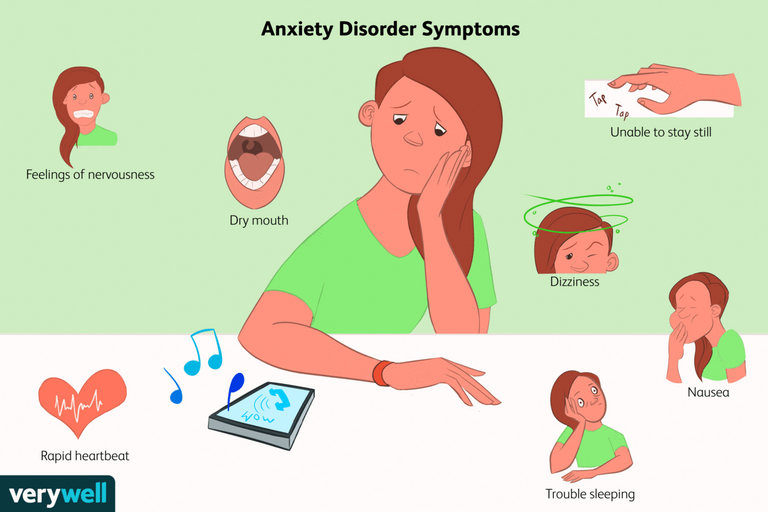Many times when people talk about anxiety they mean panic attacks. Actually anxiety is a lot more serious than just feeling worried. People experience anxiety in many different ways. People experience anxiety when they are afraid of something, or they are worried about a specific situation. Some people experience anxiety over seemingly small events in their lives, while others have anxiety over major things such as job interviews or a wedding. People also experience anxiety for no apparent reason at all.
Anxiety and fear are both sides of the same coin though. Anxiety is simply the result of increased demands placed on your mind or body. Anxiety is the cause by a past event or occurrence which makes you worry or extremely nervous. Anxiety is very similar to worry, extreme fear, or panic. The difference between these two is that anxiety is normally controlled by your body, whereas worry and fear are often your reaction to a certain situation.
There are a number of different anxiety disorders that people may suffer from. An anxiety disorder may be treated depending on the severity of your anxiety. Some anxiety disorders can be cured, while others will need ongoing medical treatment to get better. If you are unsure if your anxiety disorder is a medical condition, you should seek out your doctor for an accurate diagnosis.
Separation Anxiety Disorder is a common anxiety disorder that occurs when a person has to be separated from their loved ones, due to some sort of crisis. Separation Anxiety Disorder is one of the most common fears, and can greatly affect a person's ability to function properly in social situations. This disorder can make a person terrified of leaving the house, even if it is for a short period of time. A person with this disorder may be afraid to take a test or a job interview, and may become very anxious and depressed when they are separated from their loved ones. This can happen all of the time, but the anxiety can increase in severity when the person has to leave in a certain situation.
Generalized Anxiety Disorder (GAD) is very common, and can affect anyone. GAD is the most common type of anxiety disorder, and affects about 2.5 million Americans. GAD can involve specific phobias, such as fear of death or disaster, or the fear of having panic attacks. People who have Generalized Anxiety Disorder experience symptoms such as insomnia, heart palpitations, fatigue, muscle tension, and inability to concentrate. People who have Generalized Anxiety Disorder do not have to suffer these symptoms alone, and can seek the help that is necessary to live a full and productive life.
Post Traumatic Stress Disorder (PTSD) is another anxiety disorder that can occur after trauma. PTSD can involve something as simple as a terrifying experience, such as being raped. It can also include things like being in a war, being attacked by a mugger, being abused at home, or going into a violent car crash. Some people who have PTSD are so traumatized that they experience it in their minds when they do not actually suffer from the event itself. When someone has PTSD, it is important that they learn how to deal with their anxiety by dealing with their fears, finding ways to relax, and creating mental health rituals that will help them recover from their trauma.
When people have an issue with anxiety or panic attacks, it can also lead to Generalized Anxiety Disorder, which can cause someone to have a physical response to stressful situations. This physical reaction can be anything from rapid breathing to cramping of the muscles, blushing, nausea, and even swelling of the face or feet. It is believed that people react to stress and anxiety differently, and that some people can handle stressful situations better than others. People who suffer from a physical illness are often able to handle stressful situations much better than those without a physical illness. People who have Generalized Anxiety Disorder may find themselves waking up in the morning with stomach cramps, sweating, shaking, or feeling shaky as they try to get out of bed.
Traumatic events, such as a sudden death of a loved one or a rape or domestic violence can trigger symptoms of Post Traumatic Stress Disorder, which can be very serious. The symptoms of PTSD include flashbacks, nightmares, anxiety, insomnia, irritability, depression, loss of appetite, fatigue, and a constant fear of impending traumatic events. Often, when a person has this type of anxiety, it is because they are remembering a traumatic event and their body is working to protect them from having a traumatic event again. People with this anxiety disorders may feel that they are living in a constant state of hyper-vigilance, where they are constantly on the lookout for signs that another traumatic event may be about to happen. Other people who have Post Traumatic Stress Disorder may be afraid of looking directly into the eye, and may avoid looking at people in a certain way because they believe that the lookers might be seeing signs that another attack is about to occur.
